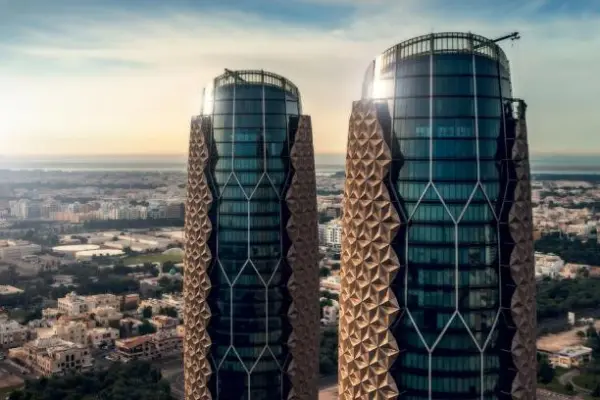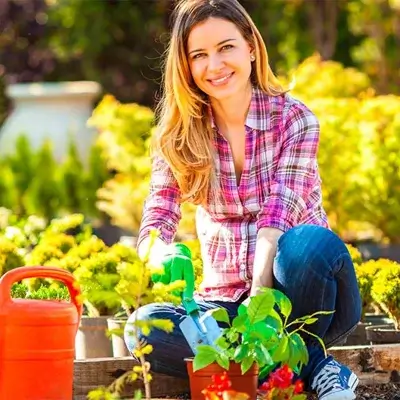Modern eco-facades of homes – are not just a fashion statement, but a conscious approach to sustainable construction that is becoming increasingly popular in 2025. The latest facade trends combine eco-friendly materials, innovative technologies, and stylish design solutions. Energy-efficient facades with integrated natural elements not only minimize environmental impact but also create a comfortable living space. Eco-friendly house design begins with the facade – the first thing that others see. Have you ever wondered how to make your home both beautiful and environmentally friendly without sacrificing functionality?
What Are Eco-Facades and Why Are They Popular in 2025
Eco-facades are the external shell of a building created using environmentally friendly materials and technologies that reduce negative environmental impact. Sustainable house facades include the use of recycled components, renewable resources, and energy-saving solutions. Stylish eco-facades combine aesthetics and functionality, making buildings not only environmentally friendly but also visually attractive.
The popularity of eco-friendly facades in 2025 is driven by several factors:
- Global climate change and environmental challenges
- Growing consumer awareness
- Stricter environmental building regulations
- The desire to reduce energy consumption
- Technological progress that has made eco-solutions more accessible
These five factors stimulate the development of the eco-friendly facade solutions market and determine the direction of sustainable architecture in the coming years.
"An eco-facade is not just a way to make a house beautiful, it's an investment in a healthy future. Modern green facades can reduce heating and air conditioning costs by up to 30%, while creating natural protection against noise and pollution."
The global market for eco-friendly facade materials in 2025 is valued at $12.5 billion, with a projected growth of 8% annually until 2030. This reflects the growing demand for sustainable solutions in construction and architecture. To order an eco-facade today, you don't need to contact specialized companies – most large architectural firms offer eco-friendly finishing options.
5 Amazing Innovations in Eco-Facades of 2025 You Didn't Know About
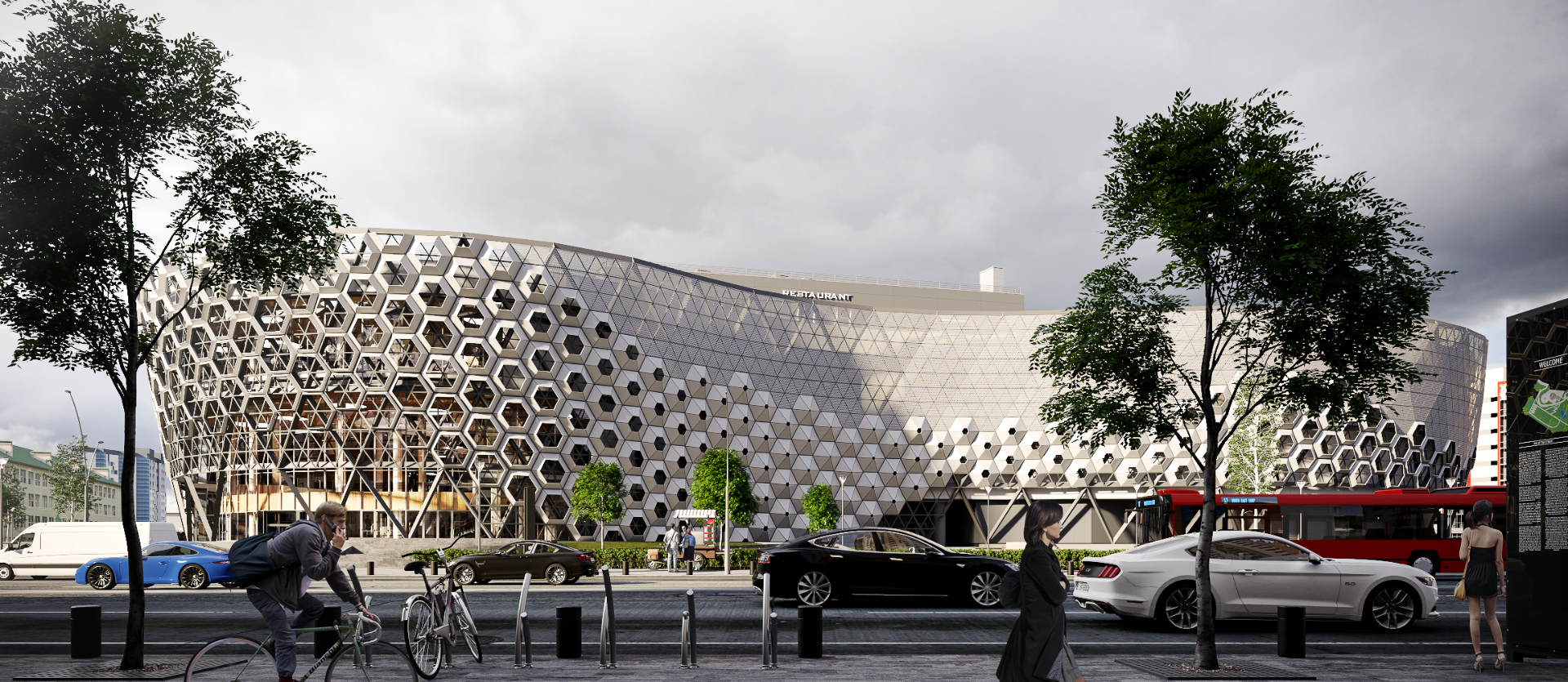 Technology doesn't stand still, and in 2025, solutions have emerged that literally change the perception of what a building facade can do. The eco-friendly style of a house is formed precisely thanks to these innovations. Here are five revolutionary innovations that are already available on the market:
Technology doesn't stand still, and in 2025, solutions have emerged that literally change the perception of what a building facade can do. The eco-friendly style of a house is formed precisely thanks to these innovations. Here are five revolutionary innovations that are already available on the market:
1. Self-Healing Facade Materials
Biomimetic coatings, inspired by the regenerative abilities of living organisms, can independently fill microcracks and restore their structure. The cost of such materials ranges from $180 to $250 per m², but their durability is 2-3 times higher than traditional solutions, making the investment justified in the long term.
2. Facades with Algae Bioreactors
In Germany, facades with microalgae bioreactors have been developed and are actively being implemented, which not only absorb CO2 but also produce biofuel. One such facade with an area of 200 m² can generate up to 15 kWh of energy per year and capture up to 2 tons of carbon dioxide. Installation costs range from $600 to $800 per m², but the system begins to pay for itself after 7-8 years through energy generation.
3. Natural Material Facades with 3D Printing
Innovative technology for processing wood waste into liquid form with subsequent 3D printing allows the creation of facade panels with unique properties. Such panels are 40% stronger than ordinary wood, have improved thermal insulation characteristics, and cost from $120 to $180 per m². At the same time, their carbon footprint is 60% lower than traditional wooden panels, making them an ideal choice for facades with a low carbon footprint.
4. Kinetic Transformer Facades
Dynamic facades that change their configuration depending on weather conditions, time of day, and season have become available for private homes. The system of movable elements optimizes natural lighting, ventilation, and heat exchange. Prices start from $350 per m², and savings on climate control reach 35-40%.
5. Photo-Transparent Concrete Panels with Natural Textures
Combining the strength of concrete with the ability to transmit light is not science fiction, but a reality of 2025. Photo-transparent concrete panels with embedded fiber optic threads create stunning light effects while maintaining excellent thermal insulation. Natural textures in the design of these panels mimic patterns of leaves, tree bark, and other natural elements. The price of such panels ranges from $400 to $600 per m², but their unique aesthetic properties make them popular for accent facade elements.
Architect Sumit Dhawan notes in his article for LinkedIn that sustainable facade materials are transforming the approach to building architecture, where each panel and each brick reflect our aspiration for a more eco-friendly future. This approach transfers the concept of sustainability from theory to the practice of everyday construction.
Eco-Friendly Materials for Facades 2025: Prices and Characteristics
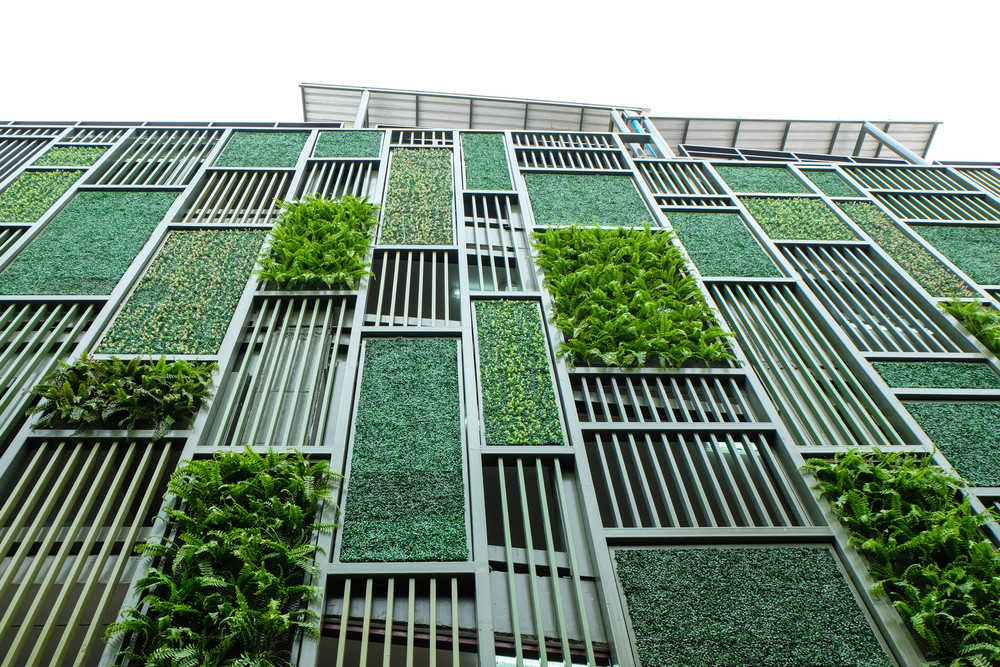 When choosing eco-friendly materials for a facade, it's important to consider not only environmental friendliness but also the price-to-quality ratio. Facades made from natural materials are becoming increasingly accessible thanks to the development of production technologies. Here are the most popular options for 2025 with their costs:
When choosing eco-friendly materials for a facade, it's important to consider not only environmental friendliness but also the price-to-quality ratio. Facades made from natural materials are becoming increasingly accessible thanks to the development of production technologies. Here are the most popular options for 2025 with their costs:
| Material | Cost ($/m²) | Lifespan (years) | Environmental Benefits | Energy Efficiency | Maintenance |
|---|---|---|---|---|---|
| Thermally modified wood with FSC certification | 70-150 | 25-30 | Renewable resource, low carbon footprint | R-value 0.7-1.0 | Protective oil treatment every 3-5 years |
| HPL panels from recycled materials | 90-180 | 30-50 | Up to 70% recycled raw materials | R-value 0.5-0.8 | Minimal, cleaning 1-2 times per year |
| New generation fiber cement boards | 60-120 | 50+ | Low carbon footprint, safe components | R-value 0.6-0.9 | Practically maintenance-free |
| Mushroom mycelium (bio-panels) | 130-220 | 15-20 | Fully biodegradable, negative carbon footprint | R-value 1.5-2.0 | Protective coating every 5 years |
| Modular system for vertical greening | 200-350 | System 20+, plants are replaced | Absorbs CO2, increases biodiversity | R-value 1.0-1.4 | Auto-irrigation, trimming 3-4 times per year |
| Solar facade panels BIPV | 350-600 | 25-30 | Generation of green energy | R-value 0.8-1.2 + generation 70-120 W/m² | Cleaning 2 times per year |
| Cork facade panels with natural shades | 80-150 | 25-40 | 100% natural renewable material | R-value 1.2-1.5 | Hydrophobic treatment every 7-10 years |
This table provides an overview of the cost-to-effectiveness ratio of various eco-friendly facade materials. Textured house facades are created using the materials listed above, each with its unique visual and tactile characteristics. When choosing, it's important to consider not only initial costs but also durability, energy savings, and maintenance expenses.
Green Facades: A Practical Guide to Selection and Installation
Green house facades with living plants are one of the most effective ways to create an eco-home. Vertical gardens on facades not only transform the exterior but also significantly improve the environmental performance of the building. In 2025, this technology has reached a new level of practicality. Here's what you need to know before installation:
Types of Facade Greening Systems and Their Cost
- Modular container systems ($200-280/m²) – ready-made blocks with substrate and auto-irrigation, ideal for large areas
- Hydroponic living walls ($250-350/m²) – lightweight systems without soil, with nutrient solution
- Systems with climbing plants ($60-120/m²) – the most budget-friendly option with support grids for climbing plants
- Felt systems ($150-230/m²) – lightweight structures with technical felt pockets for plants
The choice of system depends on the budget, architectural features of the building, and maintenance possibilities. Consultation on eco-facades from specialists will help determine the optimal solution for a specific case.
Plant Selection by Climate Zones
The right choice of plants is critically important for the success of a green facade. The best options for different climate zones:
- Cold climate: common ivy, Virginia creeper, clematis, horizontal juniper
- Temperate climate: honeysuckle caprifolium, climbing hydrangea, hedera helix
- Hot dry climate: succulents (sedums, stonecrops), lavender, rosemary, bougainvillea
- Tropical climate: philodendron, ferns, bromeliads, tradescantia
For country house facades, it's especially important to choose plants that are not only beautiful but also resistant to local weather conditions and pests.
Precise Calculation of Maintenance Costs
Many are deterred by the uncertainty regarding the maintenance of green facades. Here are specific figures for maintaining a standard green facade of 50 m² in 2025:
- Water: 1-3 liters/m²/week depending on the season, $50-120 per year
- Nutrient solutions: $30-80 per year
- Professional trimming: $200-350 for 2-3 sessions per year
- Plant replacement: 5-10% of the total number annually, $100-200
- Irrigation system maintenance: $100-150 annually
Installation of green facades is best entrusted to professionals who will take into account the structural features of the building and select the optimal mounting and irrigation system.
"A green facade is not an expense, but an investment. In addition to energy savings, you get improved air quality, reduced urban noise, and the creation of a psychologically comfortable environment. One square meter of green facade captures up to 2.3 kg of dust and produces oxygen for one person per year."
Energy-Efficient Technologies in Eco-Facades: Practical Aspect
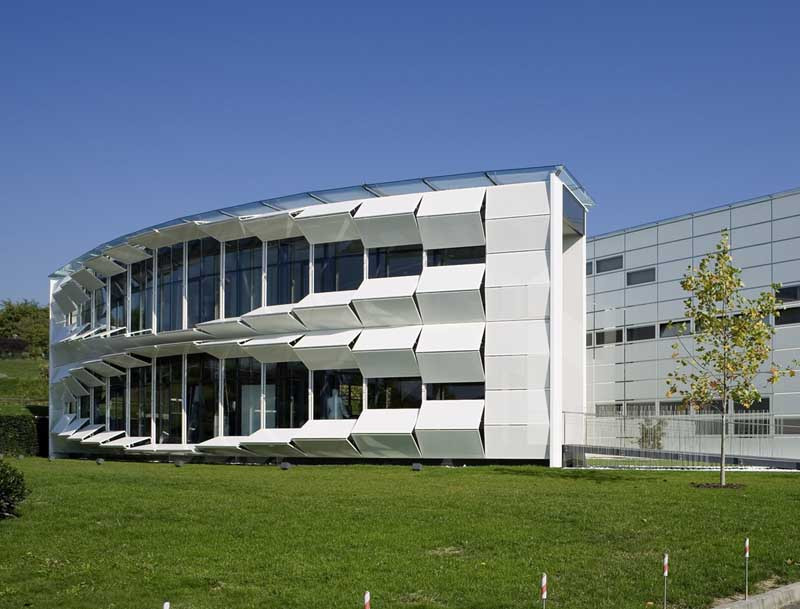 According to a study published in the journal Energy and Buildings, a properly designed building envelope can significantly affect the balance between embodied energy and energy consumed during operation. This means that an energy-efficient facade provides not only immediate savings but also long-term reduction of overall energy consumption.
According to a study published in the journal Energy and Buildings, a properly designed building envelope can significantly affect the balance between embodied energy and energy consumed during operation. This means that an energy-efficient facade provides not only immediate savings but also long-term reduction of overall energy consumption.
Here are the three most effective technologies of 2025 with specific figures on energy savings:
1. Dynamic Facades with Variable Transparency
Facades with elements that change their properties depending on weather conditions provide an optimal balance of natural lighting and thermal insulation. Such systems include:
- Electrochromic glazing (cost $600-900/m²) – reduces cooling energy consumption by 20-35%
- Thermochromic panels (cost $350-500/m²) – change transparency depending on temperature
- Mechanized blinds with solar sensors (cost $200-350/m²) – savings on lighting up to 25%
Total energy consumption reduction: 15-30% or $2.5-5 per m² per year. The energy efficiency of houses with such facades significantly exceeds the indicators of traditional construction.
2. Facades with Phase Change Materials (PCM)
Innovative materials that can store and release thermal energy when transitioning from solid to liquid state and vice versa:
- Microencapsulated PCM in plaster (cost $60-90/m²) – maintain stable temperature inside rooms
- PCM panels (cost $150-230/m²) – reduce the load on heating/cooling systems by 20-30%
- Hybrid PCM solutions with active ventilation (cost $280-350/m²) – savings up to 40% in transitional seasons
Payback period: 4-7 years depending on the climatic region. Turnkey facade design using these technologies provides not only aesthetics but also functionality.
3. Ventilated Facades with Heat Recovery
Systems that use the air space between the main wall and exterior cladding for natural ventilation and heat exchange:
- Passive ventilated facades (cost $120-190/m²) – reduce heat loss in winter by 15-25%
- Active systems with heat recovery (cost $250-380/m²) – heating savings up to 30-45%
- Hybrid systems with integrated solar collectors (cost $380-550/m²) – total energy savings 35-50%
Additional advantage: increasing the service life of the main wall by 30-50% due to protection from precipitation and temperature fluctuations. Energy-efficient technologies in eco-facades are becoming the standard for eco-house projects in 2025.
Real Examples of Eco-Facade Applications: Inspiration and Calculations
Example 1: Modernization of a Private House in the Suburbs
The Anderson family decided to renovate their 1970s house with an area of 180 m². Problems included high heating and cooling costs ($350-450 per month) and an outdated exterior appearance.
Solution: Combined eco-facade with different technologies for each side of the house:
- South facade: Fiber cement panels with integrated BIPV elements ($370/m²)
- East and west facades: Ventilated facade with thermally modified wood ($160/m²)
- North facade: High-efficiency thermal insulation with HPL panels ($190/m²)
- Accent wall at the entrance: Modular green wall ($280/m²)
Total investment: $42,500
Results:
- Reduction of energy bills by 63% (savings of $2,600/year)
- Generation of 2,800 kWh of solar energy annually
- Increase in the market value of the house by $65,000 (15%)
- Payback period: 6.5 years taking into account the increase in real estate value
To buy eco-friendly facade panels for a similar project, the family turned to local eco-facade manufacturers, which helped reduce the carbon footprint from material transportation.
"After updating the facade, our house didn't just transform externally – the entire atmosphere inside and around it changed. Electricity bills were reduced by 63%, and the rooms became quieter and more comfortable year-round. Neighbors often stop to admire our green facade, and local birds and butterflies have found a new home in it. We didn't expect that a purely practical solution would bring so much joy," shares Mary Anderson.
Example 2: Commercial Building with Zero Carbon Footprint
An office building with an area of 1,200 m² in the city center was modernized using a comprehensive approach to eco-facades. Custom facade systems were developed taking into account the specifics of the building and the climatic features of the region.
Applied technologies:
- Kinetic facade with automatic shade regulation
- Vertical garden on the south wall (120 m²)
- Integrated photovoltaic elements (350 m²)
- Rainwater collection system for irrigating the green facade
Investments: $580,000
Results for the first year of operation:
- Energy consumption reduction by 42%
- Generation of 45,000 kWh of solar energy
- Savings of 1,200 m³ of water thanks to the precipitation collection system
- Improvement in employee retention rate by 18%
- Increase in staff productivity by 12%
- Payback period: 8.3 years
This example illustrates how eco-friendly facades, whose cost initially seems high, bring substantial financial and environmental benefits in the long term.
How to Choose the Right Eco-Facade for Your Home
 Choosing the right eco-friendly facade is a complex process that requires considering many factors. Facades for country houses have their own features and requirements, different from urban buildings. Here's a step-by-step approach to selection:
Choosing the right eco-friendly facade is a complex process that requires considering many factors. Facades for country houses have their own features and requirements, different from urban buildings. Here's a step-by-step approach to selection:
Step 1: Assess Climate Conditions
Different eco-friendly materials behave differently in various climatic conditions:
- For humid climate: fiber cement panels, HPL panels, ceramic systems
- For dry hot climate: clay panels, green facades with drought-resistant plants
- For cold climate: thermally modified wood with a high level of thermal insulation, phase change materials
- For marine regions: corrosion-resistant materials with protection from salt spray
Step 2: Determine Sustainability Priorities
Environmental friendliness has different aspects, and it's important to understand what exactly is a priority for you:
- Energy efficiency – choose materials with a high R-value
- Low carbon footprint – natural materials with minimal processing
- Durability – materials requiring minimal replacement
- Circularity – materials that can be recycled after their service life
- Biodiversity – living facades that support the local ecosystem
By identifying the main priorities, you can make the facade eco-friendly in the aspects that are most important to you and your region.
Step 3: Consider Architectural Style and Aesthetics
Stylish eco-facades should harmonize with the overall design of the building and the surrounding landscape:
- For modern architecture: minimalist eco-facades with clean lines, HPL panels, fiber cement
- For traditional houses: thermally modified wood, natural stone, clay panels
- For industrial style: recycled metal, concrete with added recycled materials
- For biophilic design: green facades, natural textures in design, natural facade shades
Eco-friendly house design should not only reduce environmental impact but also create an aesthetically pleasing appearance that will delight you for many years.
Step 4: Calculate Budget and Return on Investment
Eco-friendly facades often require larger initial investments but pay off through savings during operation:
- Budget option ($60-150/m²): natural wood with protective coating, systems with climbing plants
- Mid-range segment ($150-250/m²): HPL panels, fiber cement, sun protection systems
- Premium segment ($250-600/m²): integrated solar panels, modular green walls, dynamic facades
For each option, calculate not only the cost of materials and installation but also maintenance costs, as well as potential energy savings and increased property value.
Benefits of Eco-Facades: Beyond Eco-Friendliness
 Eco-facades offer many benefits beyond reducing environmental impact. Here are the key advantages that make them an attractive choice for homeowners and developers in 2025:
Eco-facades offer many benefits beyond reducing environmental impact. Here are the key advantages that make them an attractive choice for homeowners and developers in 2025:
Economic Benefits
- Reduction of heating and air conditioning costs by 15-40%
- Increase in real estate market value by 7-15%
- Tax incentives and subsidies in some regions
- Increased service life of the main building structures
- Reduced repair costs in the long term
Economic benefits make eco-friendly facades attractive not only to environmentally conscious owners but also to those seeking long-term financial gain.
Health and Comfort
- Improved air quality inside and around the building
- Noise level reduction by 5-10 dB
- More stable microclimate in rooms
- Stress reduction thanks to visual contact with natural elements
- Protection from electromagnetic radiation (some types of green facades)
Health and wellbeing of residents is an important aspect often underestimated when choosing facade materials. Eco-facades create a healthier living environment.
Social and Image Benefits
- Enhancing the owner's status as environmentally responsible
- Improving the overall appearance of the neighborhood
- Creating a community of like-minded people
- Educational value for children and visitors
- Contribution to the development of sustainable architecture
In 2025, environmental friendliness and sustainability are becoming significant social markers that define the status and values of the property owner.
Conclusion
Eco-facades of 2025 are the perfect combination of style, functionality, and environmental friendliness. They represent not just a trend in architecture, but a fundamental approach to sustainable construction that shapes the future of cities. Modern technologies and materials make eco-friendly facades accessible for various types of buildings and budgets.
What to Consider When Planning an Eco-Facade
- Assess the climatic features of your region – they will determine the optimal materials and technologies
- Conduct an energy audit of the existing building to identify problem areas
- Calculate long-term savings, not just initial investments
- Use a phased approach to modernization if the budget is limited
- Consult specialists for the design and installation of complex systems (green walls, BIPV)
The market for textured house facades and eco-friendly materials is actively developing, offering more and more options for creating a unique and sustainable appearance for your home.
By choosing sustainable facade solutions, you are not only creating a stylish and comfortable home but also contributing to environmental protection. Energy efficiency, durability, and environmental friendliness are an investment that pays off both financially and in terms of quality of life.
The future of architecture lies with green technologies and innovative materials that allow us to live in harmony with nature without giving up comfort and aesthetics. And isn't that what we all want from our home?
